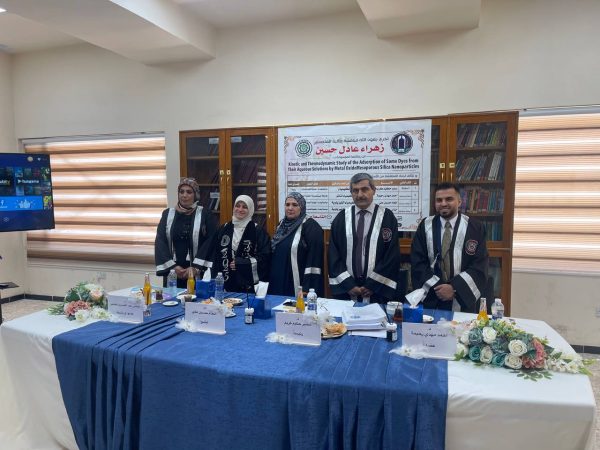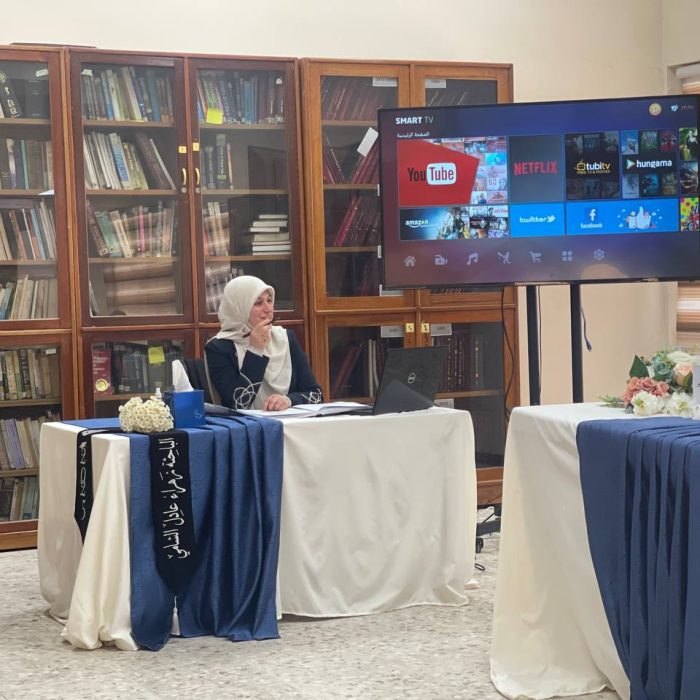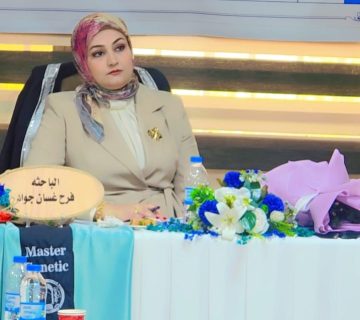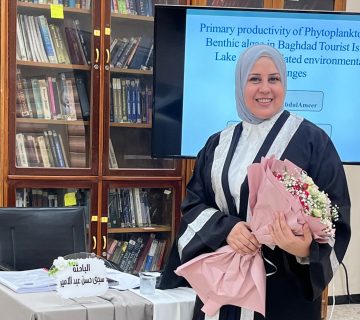Master’s Discussion
The College of Science for Women at the University of Baghdad discussed the Master’s thesis entitled:
(Kinetic and Thermodynamic Study of the Adsorption of Some Dyes from Their Aqueous Solutions by Cadmium Oxide–Mesoporous Silica Nanoparticles)
By the student: Zahraa Adel Hussein.
The main objective of this study is to explore highly applicable surfaces for the adsorption of certain industrial dyes to be effective in treating water pollution. Therefore, this work involves an intensive investigation of the adsorption of Rhodamine 6G (Rh6G) and Direct Blue 71 (DB71) dyes onto the surfaces of mesoporous silica (mSiO₂) and cadmium oxide-mesoporous silica (CdO-mSiO₂). Two samples of mesoporous silica (mSiO₂) and CdO-mSiO₂ were prepared using the sol-gel method, employing sodium silicate (Na₂SiO₃) as a cost-effective silica source and cetyltrimethylammonium bromide (CTAB) as a templating agent.
The study was conducted at the University of Baghdad, College of Science for Women, Department of Chemistry/ Baghdad /Iraq, from October to March 2024. It involved the preparation of two types of materials: mesoporous silica (mSiO₂) and cadmium oxide–mesoporous silica (CdO-mSiO₂). Both materials possess desirable characteristics, such as large pore size and high surface area. These materials are intended to serve as effective adsorbents for removing dye pollutants from aqueous solutions, thereby contributing to the development of efficient wastewater treatment methods. The characterization of the mSiO₂ and CdO-mSiO₂ samples was performed using nitrogen adsorption analysis, scanning electron microscopy (SEM), transmission electron microscopy (TEM), X-ray diffraction (XRD), atomic force microscopy (AFM), energy-dispersive X-ray spectroscopy (EDX), and Fourier-transform infrared spectroscopy (FTIR).
: The main recommendations of this thesis are as follows:
- Investigating the adsorption kinetics and thermodynamic isotherms for other dyes, particularly industrial dyes that are prevalent in wastewater.
- Studying the adsorption behavior of Rh6G and DB71 dyes onto other mesoporous materials.
- Examining the effect of various adsorption conditions, such as changes in adsorbent dosage, temperature, and pH level.
- Applying additional adsorption models to analyze the adsorption behavior of Rh6G and DB71 dyes for a deeper understanding of the adsorption processes.










